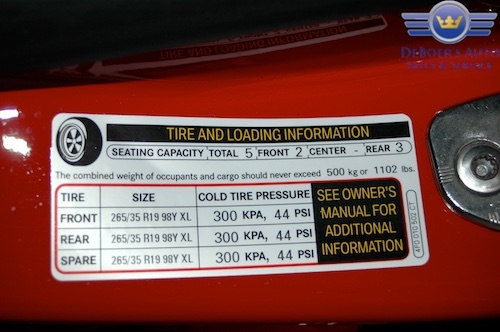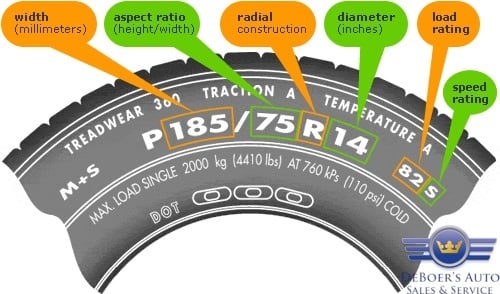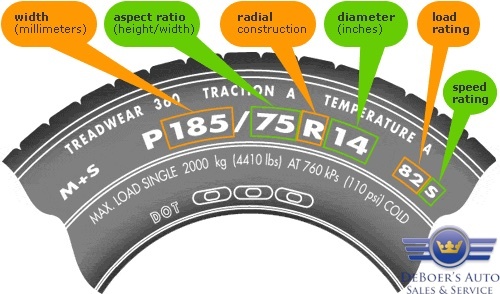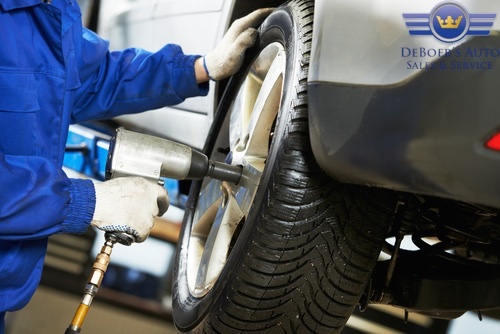They’re black, round, your car needs four of them (plus a spare) and sometimes they need to be replaced. That sums up many peoples’ knowledge of tires. If the sea of options at your local tire shop is overwhelming and the meaning of the letters and numbers on your car’s tire walls is a mystery to you, read on to learn how to decipher the information found on your tires. Once you know what the information means, you’ll find it much easier to shop for new tires.
If you’re unsure how to locate the vehicle tire information you need or where to find your car’s tire size, look at your tire’s sidewall. For illustrative purposes, assume it says P185/75R 14 82S. Here’s what that means.
Deciphering Your Tire Code
- Type of Tire. “P” means the tire is designed for “passenger” vehicles. Other notations you might see are light truck (LT), temporary spare (T) or ST (special trailer). If you don’t see any of these letters, the tire is a European metric size. These are equivalent to P tires, but may have different inflation or load capacity recommendations.
- Width. The first three numbers you’ll see is the width in millimeters from sidewall to sidewall.
- Aspect Ratio. The next two numbers (75) show the tire’s ratio of height to width. Lower numbers (55 and below) signify a shorter sidewall (which provides better handling).
- Construction. “R” stands for radial.
- Rim Diameter. The next two numbers (14) are your rim’s diameter in inches.
- Load. The next two numbers (82 in this example) are important: they show how much weight a tire is designed to support. The number you see isn’t the weight. It’s a number you’ll need to look up on a Tire Load Carrying Capacity chart. For example, the chart shows 95 can hold up to 1,521 pounds. This number is per tire so multiply by four to get maximum capacity.
- Speed. The final letter denotes the max speed a tire can run at. H equates to 112 mph.
Check Inside Your Car’s Door
Besides your tires’ sidewalls, you’ll find helpful information about your tires on a sticker inside your driver’s side door. Usually, you’ll find your car’s maximum cargo weight, tire size and ideal tire air pressure listed.

Other Factors to Consider When Purchasing New Tires
Besides knowing which size tires you’ll need, you also need to decide whether to buy original equipment (OE) tires or if an aftermarket version is acceptable. Some performance vehicle makers, such as Mercedes-Benz, BMW, Porsche and Audi, have created tires designed specifically for their brands. These are denoted by the markings MO; a star symbol; NO, N1, N2, N3 and N4; and AO, respectively, for the aforementioned brands. For the best performance, it’s wise to spend a bit more for these specialty OE tires.
If you have questions about which tires will best fit your vehicle’s needs and your driving habits, we invite you to contact us at DeBoer’s Auto. As a partner in the complete care of your vehicle, we’re happy to help.










